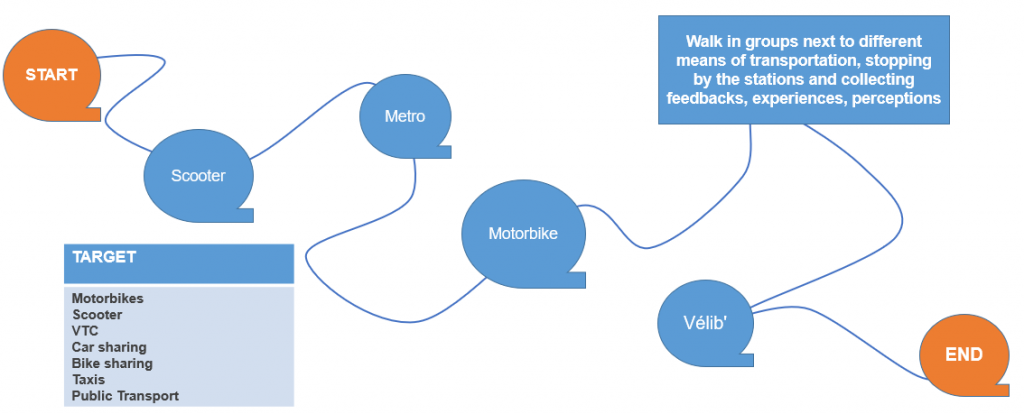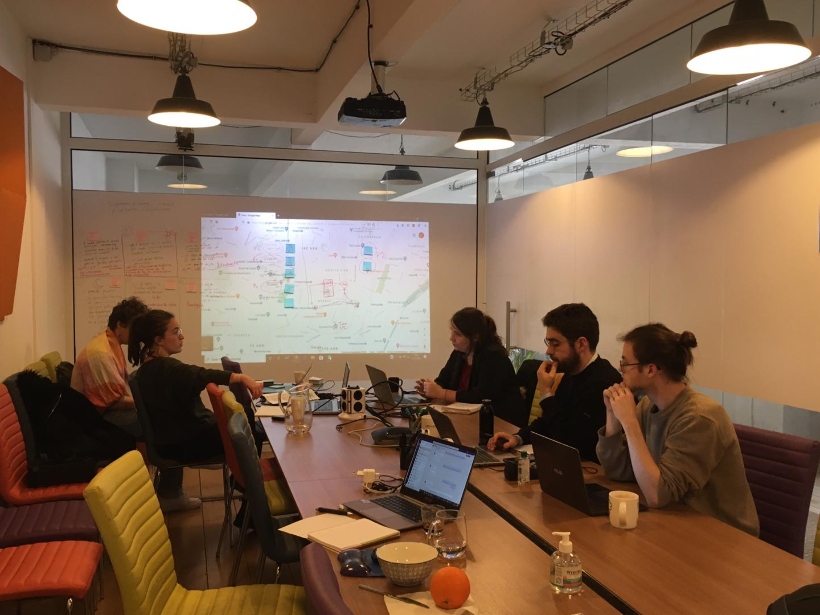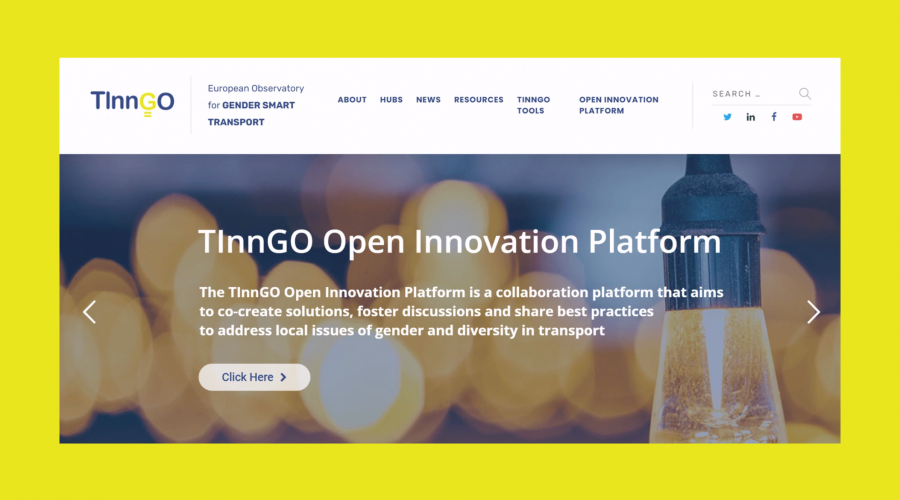Deepening the research on mobility patterns in the Paris Region, the TInnGO French Hub (led by LGI Sustainable Innovation) has developed a methodology that will allow to better grasp what the reasons are behind women’s mobility choices in Paris.
Thanks to a partnership with the association Womenability, LGI Sustainable Innovation has indeed adapted the well-known ‘exploratory walks’ methodology to the transportation realm. How to change the scope of such a powerful tool to fit the needs of a research on women’s mobility patterns?
In order to understand the French Hub approach, let us briefly mention the origins of this methodology and its applications in urban planning today. Originally experimented in Toronto and Montreal, Canada in the 1990s, these walks follow a simple logic: gather a group of women that will comment, criticize and express their sensations with regards to public space by following a given itinerary in the city (Centre Hubertine Auclert, 2018). This methodology allows local associations and communities to voice their concerns and share their experiences when it comes to walking in the city. As demonstrated by years and years of research in urban sociology, ethnography and anthropology, the planning and use of public space is not neutral. The dynamics it engenders are embedded in power structures, and especially so in racial, gender and class biases.
On the one hand, exploratory walks thus represent a participatory approach to city making that allows marginalized communities to re-appropriate public space and further shape the way it will be planned in the future. On the other hand, these walks allow local representatives and policymakers to understand the sociological implications of urban planning, and hopefully help in guiding local strategies towards a more just and inclusive organization of public spaces.
France has known multiple experimentations of this method through the years. Between 2014 and 2016, the association France Médiation has coordinated exploratory walks in 12 French cities, mainly aiming at tackling women’s feeling of insecurity in public spaces. Many associations have led exploratory walks all over the country. Some examples are A Places Egales, Womenability, Genre et Ville. Genre et Ville has further developed the methodology, switching from ‘exploratory walks’ to ‘sensitive walks’, in an effort to focus on the perceptions of the senses, the sensations of participants in a given space and time, going beyond a functionalist approach to public spaces (Centre Hubertine Auclert, 2018).
French transport operators like the SNCF and RATP have finally appropriated this approach in order to improve transport infrastructures. Since 2015, SNCF and RATP have organized exploratory walks in its train stations in order to collect the opinions of women service users and security perceptions and improve the planning of its stations.
On a similar quest as Genre et Ville and its ‘sensitive walks’, the French Hub has attempted to focus on women’s perceptions and sensations when it comes to their mobility choices. Why is it that 90% of motorbike users in Paris are men? Why is it that 60% of long-term subscribers of the bike-sharing scheme Vélib’ are men? Why are women underrepresented among car sharing and scooter users?
Understanding women’s barriers to mobility choices and patterns in the Paris Region is one of the main goals of LGI Sustainable Innovation as the partner in charge of TInnGO’s French Hub. By adapting the sensitive walks approach to our research questions, we have developed a new version of this famous methodology. Through the help and support of Womenability, we have drafted a method that allows us to walk participants through the stations and pick up points of different mobility solutions available in the Paris Region.
We are planning on carrying out six different walks, two at night and four during the day, that will be organized taking into account the socio-economic characteristics of neighborhoods and geographical locations (Paris vs cities in the Grand Paris region) in order to end up with a balanced sample of responses.

Another application of the exploratory walks method to the mobility sector would be to use one of the available means of transportation instead of walking and then collect the perceptions of participants. This solution is well adapted for public transportation but it generates some complications when it comes to free-floating and bike sharing systems. While we considered this version for the purposes of our research, we have opted for a more general approach that would be logistically less complicated and would allow us to focus on smart mobility solutions like free-floating and sharing systems.
The current sanitary restrictions due to the covid19 crisis have unfortunately limited our options and forced us to postpone the planned walks. We will follow the evolution of the crisis and publish updates, feedback and findings on the observatory page.
Stay tuned!





